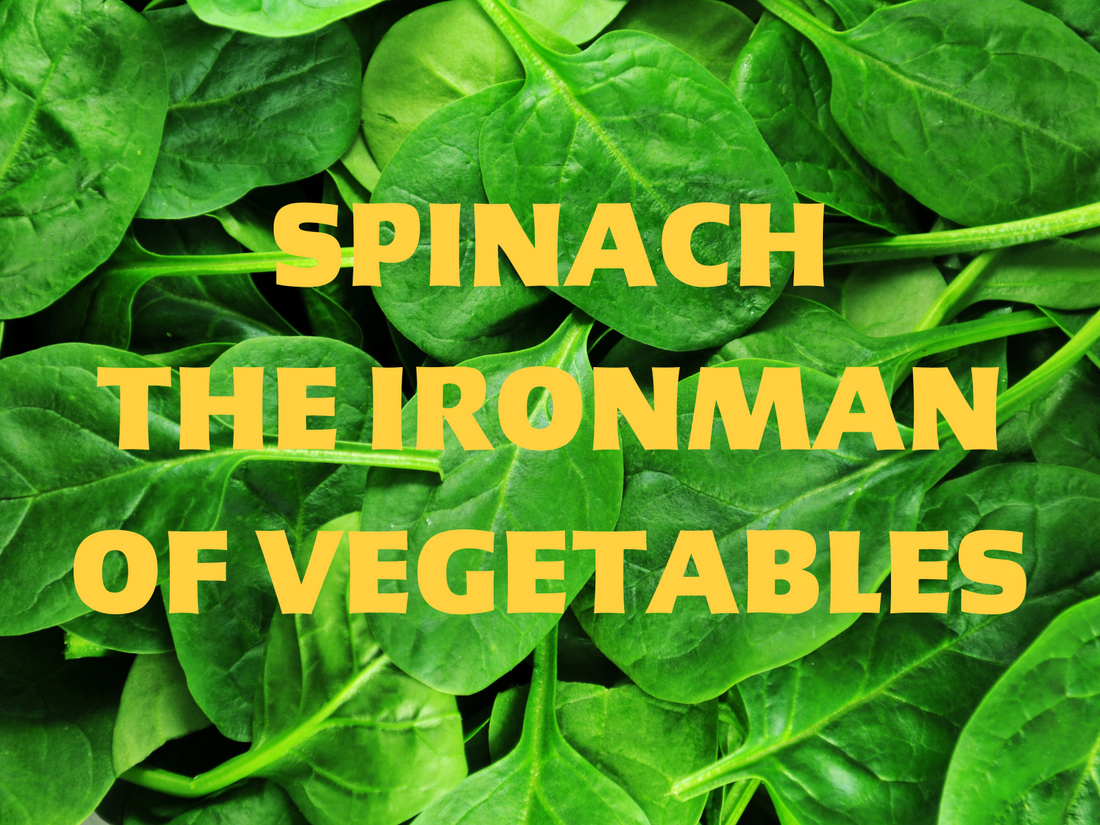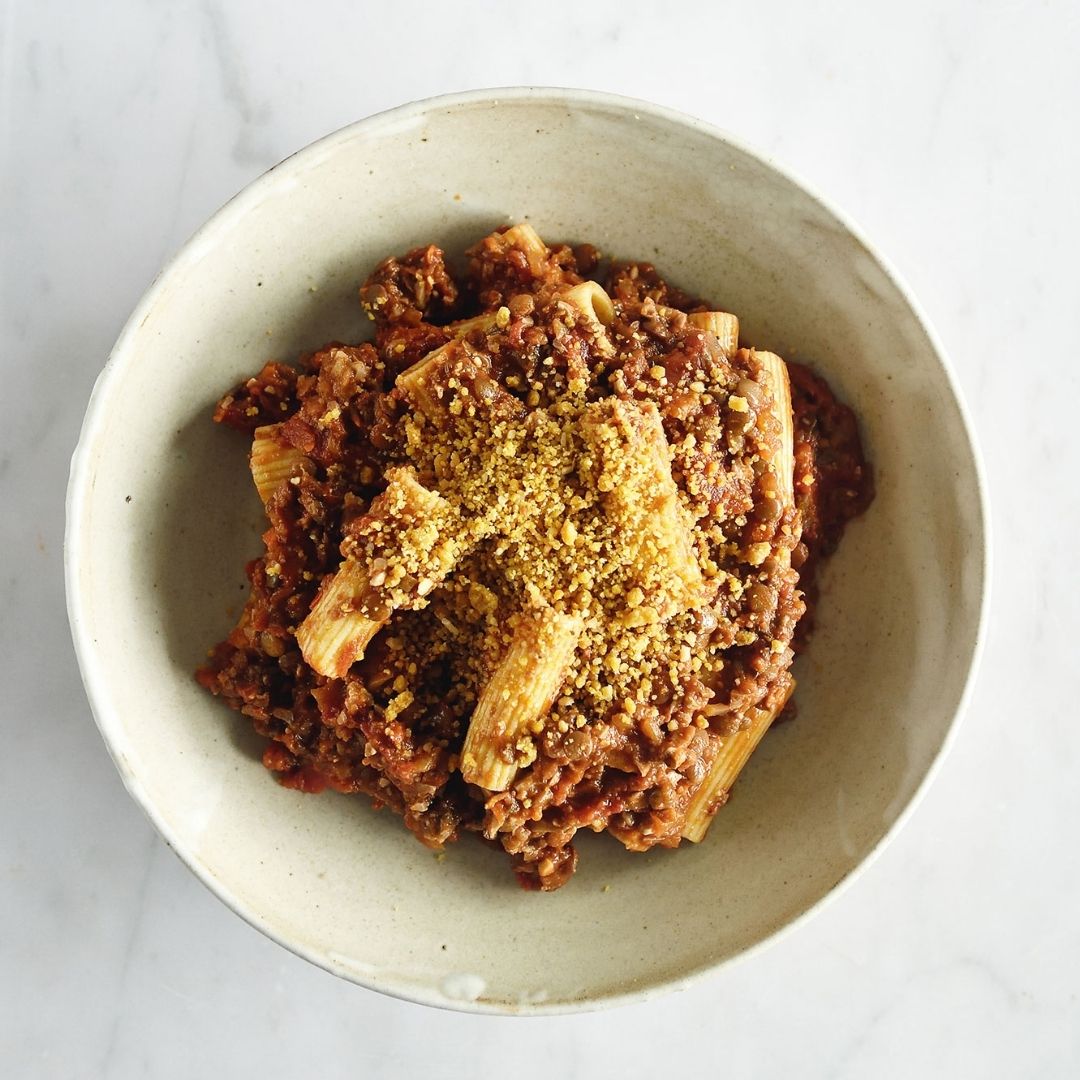
Spinach: The Ironman of Vegetables
Share
Green Vegetable Tofu Saag Nutrition

A lower caloric option holding a strong nutritional profile, our Green Vegetable Tofu Saag helps to keep you feeling groovy and alive throughout the day!
| NUTRITION INFORMATION | ||
|---|---|---|
| Servings per package: 1 | ||
| Serving size: 423g | ||
| Per Serving | Per 100g (100ml) | |
| Energy | 516 kcal (2144 kj) | 107 kcal (442 kj) |
| Protein | 25.3g | 5.2g |
| Total Fat | 34.4g | 7.1g |
| -Saturated Fat | 14.8g | 3.1g |
| Cholesterol | 0 mg | 0 mg |
| Carbohydrate | 37.4g | 9.1g |
| -Total Sugar | 16.7g | 3.4g |
| Dietary Fibre | 8.7g | 2.1g |
| Sodium | 1358 mg | 280 mg |
| Vitamin A | 540.4 | 111.5 |
| Iron | 8.5 | 1.8 |
Ingredients: Spinach, Courgette, Tofu, Water, French Beans, Cashew Nuts, Coconut Cream, White Onion, Vegetable Oil, White Potato, Coriander (Fresh), Ginger, Green Chili, Salt, Garlic, Lemon Juice, Ground Coriander Powder, Ground Cumin Powder, Ground Turmeric Powder, Garam Masala Powder (Cumin, Black Pepper, Coriander, Cardmom Seeds, Cloves, Nutmeg, Cinnamon, Dry Ginger, Bay Leaf, Caraway, Mace)
Allergens:
Peanuts, Soy, Tree nuts
How our Green Vegetable Tofu Saag stacks up to the recommended allowances
| % Recommended Dietary Allowances (RDA) | ||||
|---|---|---|---|---|
| Men | Women | |||
| Minimum | Maximum | Minimum | Maximum | |
| Energy (kcal) | 23.47% | 28.69% | 23.47% | 28.69% |
| Protein | 30.63% | 22.97% | 30.63% | 22.97% |
| Fats | 46.85% | 40.16% | 46.85% | 40.16% |
| Carbohydrates | 15.12% | 13.61% | 15.12% | 13.61% |
| Dietary Fibre | 33.27% | 33.27% | 33.27% | 33.27% |
| Vitamin A | 72.05% | 72.05% | 72.05% | 72.05% |
| Iron | 106.38% | 47.28% | 106.38% | 47.28% |
This meal also qualifies for nutrient claims following HPB’s guidelines of:
- Source of Protein
- No Added Sugar
- Cholesterol Free
- Source of Calcium
- Source of Iron
- Rich in Vitamin C
- Source of Vitamin A
- Source of Vitamin B9
Spinach: Ironman of Veggies
| Vitamin/Nutrient (from 100g portion of Spinach) | % of Daily Recommended Intake | |
|---|---|---|
| Men aged 30-50 | Women aged 30-50 | |
| Dietary Fire | 9.23% | 12.00% |
| Vitamin A | 69.87% | 69.87% |
| Iron | 44.63% | 19.83% |
| Vitamin K | 411.67% | 548.89% |
Spinach is a fantastic option as its low in calories and is the main star of the dish, it helps to keep the dish at a relatively low caloric option, while also being high in nutrients like vitamins and minerals and even phytonutrients.

High in Dietary Fibre
Spinach is high in insoluble fibre, which helps in promoting healthier and better bowel movements (BSc, 2023). In particular, insoluble fibre does not mix with water which helps to add bulk to your stool. This added bulk helps facilitate the faster movement of food and waste through your gut, which can prove to alleviate constipated individuals (Ms, 2017). Insoluble fibre also supports insulin sensitivity and may help to reduce your risk of diabetes (Norris, 2023).
High in Vitamins A & K
Spinach also boast a great micronutrient profile, being high in vitamins A & K. Vitamin A helps to preserve your eyesight and fight against age-related decline regarding your vision (Rd, 2023). Vitamin A also plays a vital role in bone growth and development. Having a deficiency in Vitamin A puts people at a higher risk of bone fractures compared to those who consume sufficient amounts (Zhang et al., 2017).
Spinach is also brimming with Vitamin K, easily hitting your recommended needs per day with just 2 leaves. There is no upper limit for Vitamin K, hence it is safe to consume past your RDA! Likewise, Vitamin K supports important functions in our body such as blood clotting, and also contributing to your bone and heart health (Crider, 2023). While our bodies are able to produce a small amount of vitamin K, it is suggested for us to consume the majority of our requireds needs through vegetables such as spinach.
High in Iron
Spinach is one of the vegetables which a high iron content, where a 100g portion boasts close to 45% and 20% of your recommended needs daily for men and women respectively. Our bodies uses iron to make haemoglobin, a protein in red blood cells that helps carry oxygen from our lungs to the other parts of our bodies. (Office of Dietary Supplements - Iron, n.d.) Iron is available in two forms: heme iron and non-heme iron. Non-heme iron comes from plant sources and iron-fortified food products, whereas animal sources have both heme and non-heme iron. Our bodies do not absorb non-heme iron foods as well as heme iron from animal sources. This is why it is crucial on a plant-based diet to consume more iron to make up for the lost absorbability. Spinach is a great source to incorporate more iron into our diets. Moreover, our Saag is also rich in vitamin C, which works in tandem with iron and helps its absorption into our bodies better.
Promote Eye health
Spinach contains many phytonutrients. To list a few, Kaempferol (Chen & Chen, 2013) and Quercetin are antioxidants that can reduce our risks of cancer and chronic diseases, while reducing inflammation (Chen & Chen, 2013) (Boots et al., 2008). More specifically, Lutein and Zeaxanthin found in spinach helps improve and promote better eye health (Krinsky et al., 2003). Our eyes also contain high quantities of these two phytonutrients which protect our eyes from sunlight damage (Roberts et al., 2009). These two compounds may also prevent the major causes of blindness like cataracts (Vu et al., 2006), and even reverse existing damage (Hobbs & Bernstein, 2014).
Lowers Blood Pressure
Nitrates in spinach may also promote better heart health (Tang et al., 2011), via regulating blood pressure levels, hence reducing our risk of heart diseases (Bryan & Ivy, 2015). A study of 27 individuals that consumed spinach showed that their blood pressure levels were significantly reduced (Jovanovski et al., 2015), along with other studies, thoroughly backs up that spinach does wonders to our blood pressure.
Summary
On a special note, individuals whom are taking blood thinners like warfarin should be wary of the quantity of spinach they consume due to its exorbitant high levels of Vitamin K which might interfere with medication. Those prone to kidney stones should seek to avoid and limit their spinach intake too. However aside from these two special cases, Spinach is a beneficial vegetable that would help bring our nutritional levels up, while keeping calories low with its consumption. Spinach’s phytonutrients that may possess beneficial effects to our bodies allows it to be an undisputed champion in its overall nutrient profile. Snag our Green Vegetable Tofu Saag and enjoy the plentiful benefits spinach delivers with its earthy goodness!
References
Boots, A. W., Haenen, G. R., & Bast, A. (2008). Health effects of quercetin: From antioxidant to nutraceutical. European Journal of Pharmacology, 585(2–3), 325–337. https://doi.org/10.1016/j.ejphar.2008.03.008 Bryan, N. S., & Ivy, J. L. (2015). Inorganic nitrite and nitrate: evidence to support consideration as dietary nutrients. Nutrition Research, 35(8), 643–654. https://doi.org/10.1016/j.nutres.2015.06.001 BSc, K. G. (2023, February 14). Spinach 101: Nutrition Facts and health Benefits. Healthline. https://www.healthline.com/nutrition/foods/spinach#nutrients Chen, A. Y., & Chen, Y. C. (2013). A review of the dietary flavonoid, kaempferol on human health and cancer chemoprevention. Food Chemistry, 138(4), 2099–2107. https://doi.org/10.1016/j.foodchem.2012.11.139 Crider, C. (2023, November 29). Vitamin K: Everything you may need to know. Healthline. https://www.healthline.com/health/vitamin-k#deficiency-symptoms Hobbs, R. P., & Bernstein, P. S. (2014). Nutrient supplementation for age-related macular degeneration, cataract, and dry eye. Journal of Ophthalmic and Vision Research, 9(4), 487. https://doi.org/10.4103/2008-322x.150829 Jovanovski, E., Bosco, L., Khan, K., Au-Yeung, F., Ho, H., Zurbau, A., Jenkins, A. L., & Vuksan, V. (2015). Effect of spinach, a high dietary nitrate source, on arterial stiffness and related hemodynamic measures: a randomized, controlled trial in healthy adults. Clinical Nutrition Research, 4(3), 160. https://doi.org/10.7762/cnr.2015.4.3.160 Krinsky, N. I., Landrum, J. T., & Bone, R. A. (2003). BIOLOGIC MECHANISMS OF THE PROTECTIVE ROLE OF LUTEIN AND ZEAXANTHIN IN THE EYE. Annual Review of Nutrition, 23(1), 171–201. https://doi.org/10.1146/annurev.nutr.23.011702.073307 Ms, J. L. (2017, June 4). Good fiber, bad fiber - how the different types affect you. Healthline. https://www.healthline.com/nutrition/different-types-of-fiber#TOC_TITLE_HDR_7 Norris, T. (2023, February 16). What’s the difference between soluble and insoluble fiber? Healthline. https://www.healthline.com/health/soluble-vs-insoluble-fiber#benefits Office of Dietary Supplements - Iron. (n.d.). https://ods.od.nih.gov/factsheets/Iron-Consumer/#:~:text=professional fact sheet.-,What is iron and what does it do%3F,that provides oxygen to muscles. Rd, H. W. (2023, May 7). 6 Health benefits of vitamin A, backed by science. Healthline. https://www.healthline.com/nutrition/vitamin-a-benefits#TOC_TITLE_HDR_6 Roberts, R. L., Green, J., & Lewis, B. (2009). Lutein and zeaxanthin in eye and skin health. Clinics in Dermatology, 27(2), 195–201. https://doi.org/10.1016/j.clindermatol.2008.01.011 Tang, Y., Jiang, H., & Bryan, N. S. (2011). Nitrite and nitrate: cardiovascular risk–benefit and metabolic effect. Current Opinion in Lipidology, 22(1), 11–15. https://doi.org/10.1097/mol.0b013e328341942c Vu, H. T. V., Robman, L., Hodge, A., McCarty, C. A., & Taylor, H. R. (2006). Lutein and zeaxanthin and the risk of cataract: The Melbourne Visual Impairment Project. Investigative Ophthalmology & Visual Science, 47(9), 3783. https://doi.org/10.1167/iovs.05-0587 Zhang, X., Zhang, R., Moore, J., Wang, Y., Yan, H., Wu, Y., Tan, A., Fu, J., Shen, Z., Qin, G., Li, R., & Chen, G. (2017). The Effect of Vitamin A on Fracture Risk: A Meta-Analysis of Cohort Studies. International Journal of Environmental Research and Public Health/International Journal of Environmental Research and Public Health, 14(9), 1043. https://doi.org/10.3390/ijerph14091043




